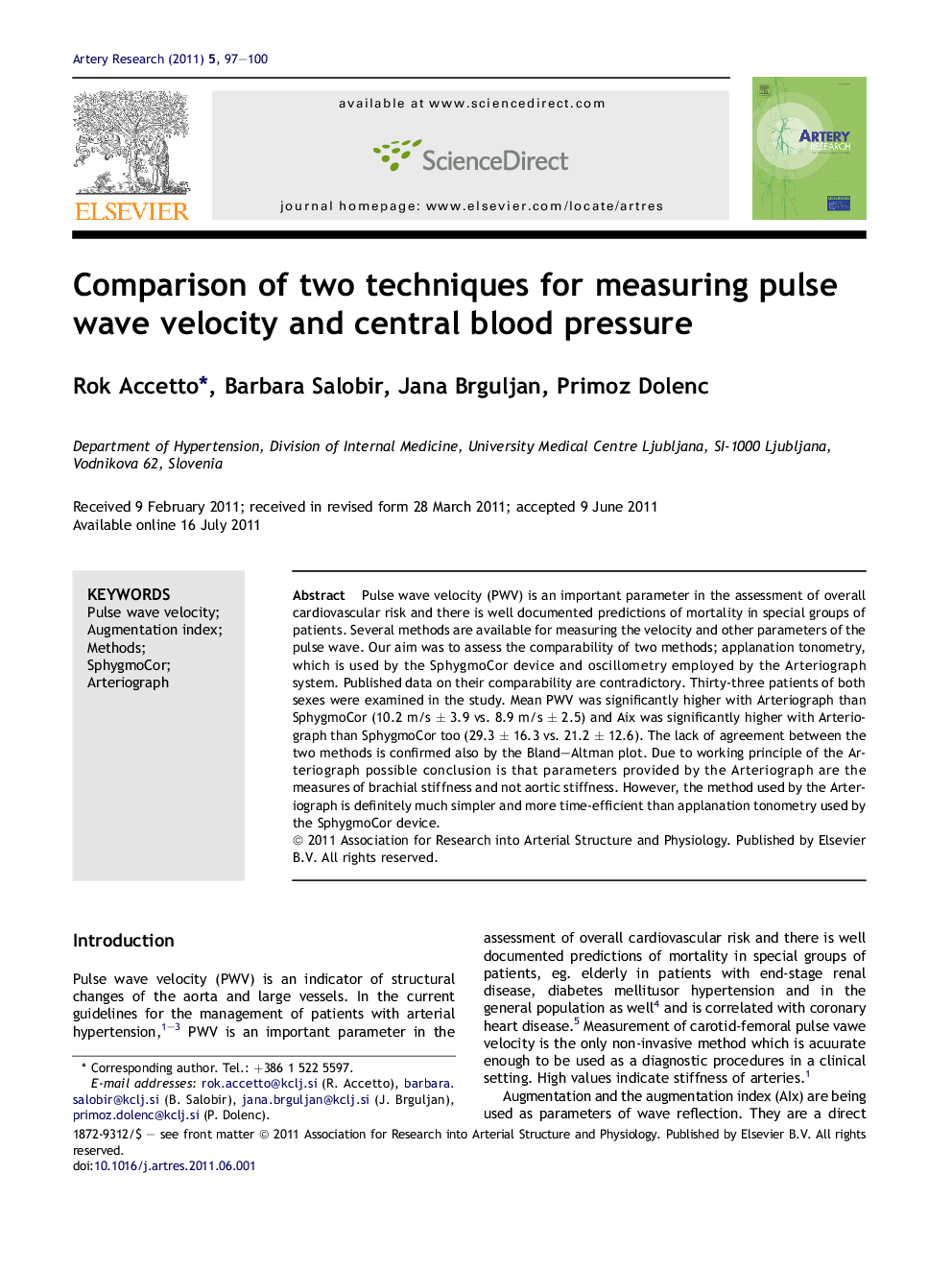| Article ID | Journal | Published Year | Pages | File Type |
|---|---|---|---|---|
| 2891722 | Artery Research | 2011 | 4 Pages |
Pulse wave velocity (PWV) is an important parameter in the assessment of overall cardiovascular risk and there is well documented predictions of mortality in special groups of patients. Several methods are available for measuring the velocity and other parameters of the pulse wave. Our aim was to assess the comparability of two methods; applanation tonometry, which is used by the SphygmoCor device and oscillometry employed by the Arteriograph system. Published data on their comparability are contradictory. Thirty-three patients of both sexes were examined in the study. Mean PWV was significantly higher with Arteriograph than SphygmoCor (10.2 m/s ± 3.9 vs. 8.9 m/s ± 2.5) and Aix was significantly higher with Arteriograph than SphygmoCor too (29.3 ± 16.3 vs. 21.2 ± 12.6). The lack of agreement between the two methods is confirmed also by the Bland–Altman plot. Due to working principle of the Arteriograph possible conclusion is that parameters provided by the Arteriograph are the measures of brachial stiffness and not aortic stiffness. However, the method used by the Arteriograph is definitely much simpler and more time-efficient than applanation tonometry used by the SphygmoCor device.
